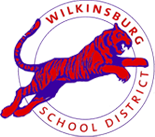STEAM
|
2nd Grade STEAM |
|
|
Objective: |
Students will be exposed to a developmentally appropriate pathway through which the six Wilkinsburg STEAM Habits of Mind can be developed. These Habits of Mind were selected to help students acquire and grow a mindset and the skills necessary to be successful in the 21st century workplace. |
|
Wilkinsburg STEAM Habits of Mind |
|
|
Collaborating |
|
|
Building |
|
|
Problem- Solving |
|
|
Persevering |
|
|
Coding |
|
|
Investigating |
|
|
What Children Will Do Throughout the School Year |
|
Students will be presented with a balance of activities that can be grouped into four themes: building, creativity, coding and electronics. Possible outcomes by the end of the school year include:
|
|
3rd Grade STEAM |
|
|
Objective: |
Students will be exposed to a developmentally appropriate pathway through which the six Wilkinsburg STEAM Habits of Mind can be developed. These Habits of Mind were selected to help students acquire and grow a mindset and the skills necessary to be successful in the 21st century workplace. |
|
Wilkinsburg STEAM Habits of Mind |
|
|
Collaborating |
|
|
Building |
|
|
Problem- Solving |
|
|
Persevering |
|
|
Coding |
|
|
Investigating |
|
|
What Children Will Do Throughout the School Year |
|
Students will be presented with a balance of activities that can be grouped into four themes: building, creativity, coding and electronics. Possible outcomes by the end of the school year include:
|
|
4th Grade STEAM |
|
|
Objective: |
Students will be exposed to a developmentally appropriate pathway through which the six Wilkinsburg STEAM Habits of Mind can be developed. These Habits of Mind were selected to help students acquire and grow a mindset and the skills necessary to be successful in the 21st century workplace. |
|
Wilkinsburg STEAM Habits of Mind |
|
|
Collaborating |
|
|
Building |
|
|
Problem- Solving |
|
|
Persevering |
|
|
Coding |
|
|
Investigating |
|
|
What Children Will Do Throughout the School Year |
|
Students will be presented with a balance of activities that can be grouped into four themes: building, creativity, coding and electronics. Possible outcomes by the end of the school year include:
|
|
5th Grade STEAM |
|
|
Objective: |
Students will be exposed to a developmentally appropriate pathway through which the six Wilkinsburg STEAM Habits of Mind can be developed. These Habits of Mind were selected to help students acquire and grow a mindset and the skills necessary to be successful in the 21st century workplace. |
|
Wilkinsburg STEAM Habits of Mind |
|
|
Collaborating |
|
|
Building |
|
|
Problem- Solving |
|
|
Persevering |
|
|
Coding |
|
|
Investigating |
|
|
What Children Will Do Throughout the School Year |
|
Students will be presented with a balance of activities that can be grouped into four themes: building, creativity, coding and electronics. Possible outcomes by the end of the school year include:
|
|
6th Grade STEAM |
|
|
Objective: |
Students will be exposed to a developmentally appropriate pathway through which the six Wilkinsburg STEAM Habits of Mind can be developed. These Habits of Mind were selected to help students acquire and grow a mindset and the skills necessary to be successful in the 21st century workplace. |
|
Wilkinsburg STEAM Habits of Mind |
|
|
Collaborating |
|
|
Building |
|
|
Problem- Solving |
|
|
Persevering |
|
|
Coding |
|
|
Investigating |
|
|
What Children Will Do Throughout the School Year |
|
Students will be presented with a balance of activities that can be grouped into four themes: building, creativity, coding and electronics. Possible outcomes by the end of the school year include:
|


